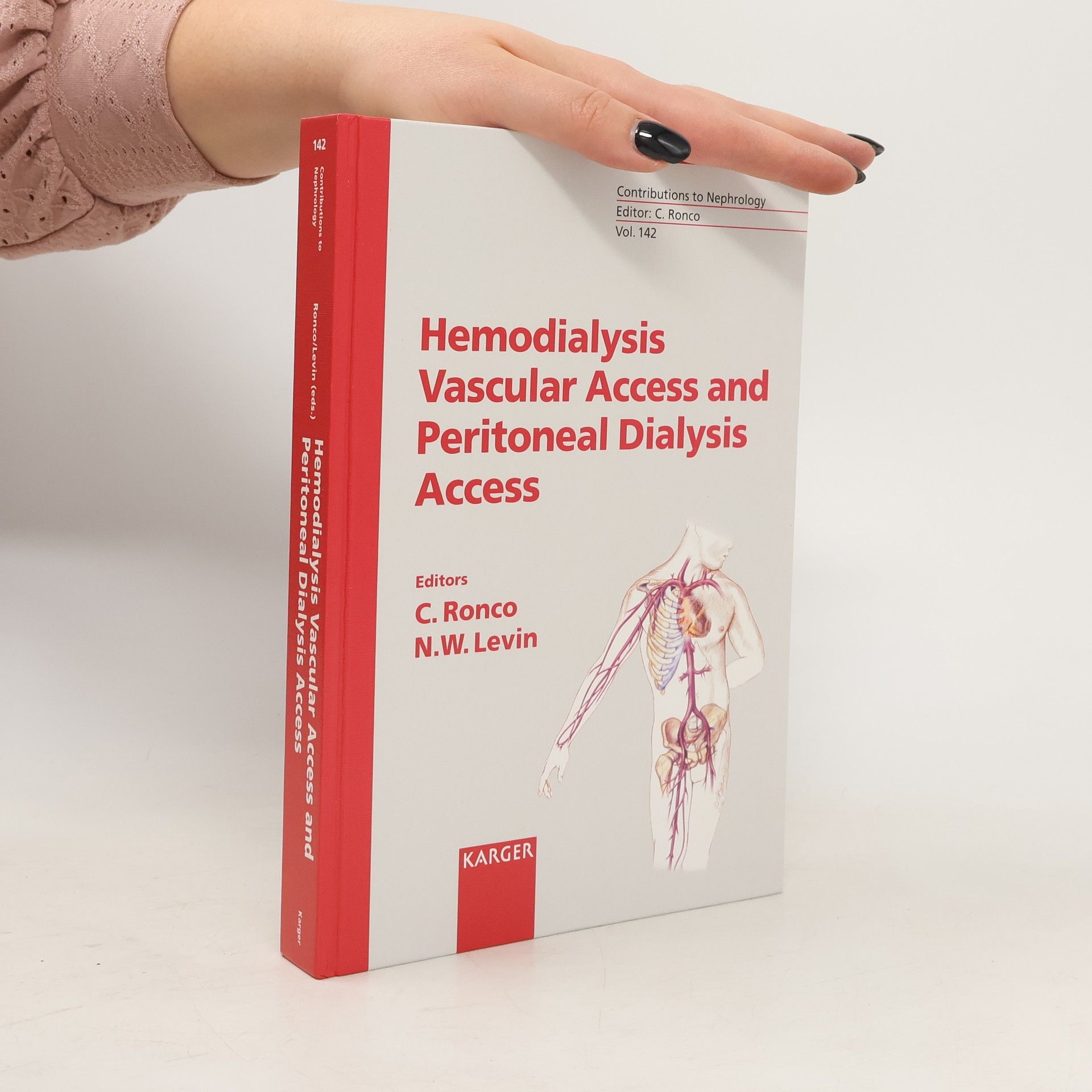A newborn baby clings to life,A young man seeks his future.Born without kidney function, baby Lisa's life is in the hands of Claudio Ronco, physician, scientist and inventor of CARPEDIEM, a medical device for infant dialysis. This remarkable and moving story details the experiences of a doctor's long and productive life as he fights to give a newborn baby a chance at the same. This is also the story of the revolutionary new machine that provides life support for babies, and Ronco's team of talented physicians who, through creativity, team-work and determination overcome clinical challenges that used to be considered insurmountable.
Claudio Ronco Book order




- 2022
- 2007
Hemodiafiltration
- 249 pages
- 9 hours of reading
- 2004
Hemodialysis vascular access and peritoneal dialysis access
- 472 pages
- 17 hours of reading
Recent developments have spurred a renewed interest in novel solutions to access the patient circulation, mainly concentrating on vascular access for renal replacement therapies and on peritoneal dialysis access. Starting with the epidemiology, the focus then shifts to the evolution of new techniques and monitoring procedures with regard to hemodialysis, which are discussed and evaluated. Attention is also paid to the new biomaterials available, concentrating on their improved biocompatibility and surface characteristics. As developments in the field of peritoneal dialysis have taken a similar turn, new devices providing access to the peritoneal cavity which have recently been made available are introduced next. Last but not least, the management of complications and the continuous maintenance and care of the access with regard to both hemodialysis and peritoneal dialysis are highlighted. This book provides a complete overview of the devices, catheters and methods currently available to ensure successful vascular and peritoneal access. Taking into account both the physiology of the extracorporeal circulation and the mechanisms of peritoneal dialysis with regard to the most adequate access techniques, this is a unique resource for clinicians, investigators and researchers in the field of renal replacement therapy
- 1997
Circulation in native and artificial kidneys
- 172 pages
- 7 hours of reading
Reprint Blood Purification 1997, Vol. 15, No. 4-6 This interesting volume presents research on all aspects of the circulation in native and artificial kidneys. For the first time, such a specific topic is reviewed by experimental physiologists, pharmacologists, intensive care physicians and nephrologists to reach a multidisciplinary approach to definitions, diagnostic measures and therapeutic interventions. In the first part of the book, physiologic and physiopathologic characteristics of renal circulation are analyzed, with particular attention to how they may affect the kidney's response to stress. Next, the role of systemic inflammation and cardiovascular physiologic adjustments is explored. The third part of this book is dedicated to an analysis of therapeutic interventions directed toward the manipulation of the renal vasculature and renal function in the clinical arena. Despite all of these measures, established renal failure requiring artificial and renal support eventually occurs in some patients. The practicalities, characteristics, indications and consequences of continuous renal displacement are discussed in great detail in the last part of this book, as are their implications for patient care. This volume is of the greatest use not only as a reference book for experienced specialists, but it is also invaluable as a textbook for specializing fellows or residents.